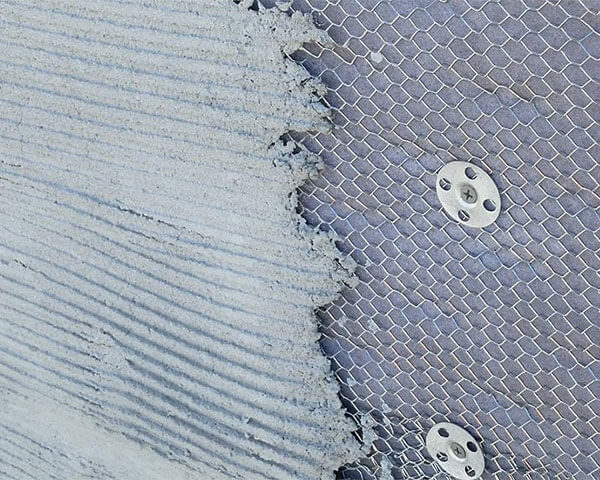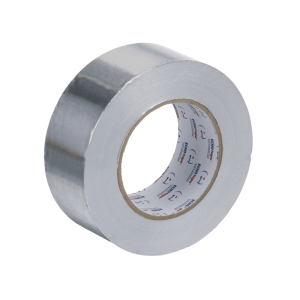Stucco provides a durable, low maintenance finish that adds lots of character to a house. It can be applied with either one coat or three coat process, but there is some confusion about the methods. Let’s take a look at each technique as well as the advantage that each has to offer:
- What is Three Coat Stucco?
- What Is One Coat Stucco?
- Common Problems with Stucco and Home Building
- How Is Tape Used in Stucco Applications?
What is Three Coat Stucco?
Three coat is the original stucco process, consisting of paper and wire, a scratch coat, a brown coat, and a finish, or “top” coat. In industry terms — lath, scratch and brown. The finish coat is not considered a step because it is needed on every type of application that is used, so they are mainly referring to the stages up until the finish coat.
More specifically, a lath of an asphalt-infused paper is applied over a weather-resistant barrier. Then a layer of furred chicken wire (meaning it sticks off the wall a little bit) is applied. Next comes the scratch coat, which is a base layer of field-mixed Portland cement, sand, lime, and water with a series of horizontal lines scratched into it. Then comes the brown coat. This layer is applied with a darby, or long trowel, to make sure the cement is applied evenly. Finally, a finish coat is put on with a hawk and trowel and it can be applied in a variety of textures. These coats come in a range of colors so no additional painting is needed.
The big advantage of three-coat stucco is its strength and durability. Since it is twice as thick as one coat it’s better able to hold up to wear and tear. The two drawbacks are time and cost. It can take weeks for each layer to be applied and cure. As a result, the extra materials and labor make three-coat more expensive than the one coat option.
What Is One Coat Stucco & What Is The Benefit?
The term one coat stucco refers to a blend of Portland cement, sand, fibers, special proprietary chemicals, and water. This method speeds up the three coat stucco process by combining the scratch and brown coat into a single application of 3/8″ to 1/2″ thick. It is typically applied over rigid foam board and lath to provide an Energy Code required Continuous Insulated durable cladding.
That said, the term “one coat” is a misnomer because the first iteration had the colored finish coat mixed into the blend. Unfortunately, it resulted in uneven color and fibers that were visible at top layer so the two-coat method was adapted.
The one coat method is growing in popularity due to the advantages of speed and cost. Unlike three-coat, one coat saves money because the application takes approximately half the time resulting in quicker job completions, reduced labor costs, low maintenance, and life-cycle cost ratio. Yet, One Coat Stucco provides all the same benefits expected from three-coat stucco…durability, design flexibility, and fire resistance. The downside is that the thinner depth makes it is more susceptible to damage.
Common Problems with Stucco and Home Building
Stucco is actually a porous material and is designed to allow the absorption of water. Housewrap, or water-resistive barrier, acts as a drainage plane, and as the stucco dries, water flows down the building paper and weeps out the bottom of the stucco. As long as the sheathing stays dry and water does not get trapped in the wall cavity, problems will be rare. But… they do still happen.
It’s important that high-performance building professionals and contractors be aware of these issues for they are far less forgiving when water enters the system. For example the use of housewrap as a water-resistant barrier (WRB). House wrap is primarily an air barrier with water-resistive qualities. As a result of changes to building codes that specified the use of WRBs, contractors should be aware that in order to function properly there needs to be a space between the stucco and the WRB so that water can dry out. If this is not adhered to as a best practice, water can get trapped and degrade the entire wall assembly, not only leading to the growth of black mold but deteriorate the structural integrity of the building.
Also, improper window flashings continue to be an issue, as the stucco cladding is most vulnerable to excessive quantities of water entering the wall assembly at window flashings and roof wall connections.
[echo_cta]
How Is Tape Used in Stucco Applications?
You may not be aware that adhesive tape is an important tool used in exterior stucco application. Stucco composite can damage windows and frames if it accidentally comes in contact with it during the application process, so contractors make sure to mask them off using a tape that is specifically designed to keep a strong hold against plaster and withstand intense sunlight and fluctuating temperatures. It is also important for the tape to be able to hold up heavy plastic sheeting that is used to keep windows and other surfaces clean and protected while stucco is being applied. Additionally, tape is used to create a watertight seal to protect surfaces not meant to get wet, as explained in the common problems section. (Plus, one of the steps in stucco application involves applying a light spray of water over the stucco surface to help it set!)
So why use specialty stucco tape instead of something more generic? It all comes down to choosing the right tool for the job. Stucco work requires tapes that are designed specifically to survive the weight of plaster; adhere to multiple surfaces, not just concrete and wood; and leave no residue when it’s removed 7, 10 or even 60 days later. This means it needs to stand up to a multitude of elements, including sun, rain, wind and even severe temperatures, before removing cleanly.
Consider these related posts for more stucco information:
- The Tape That Stands Up To Stucco
- In The Field With Stucco Expert Kirk Giordano
- 2019 Stucco Market Trends
If you are involved in stucco contracting work, be sure to choose a tape designed with stucco purposes in mind in order to ensure a clean, high-quality job. Take a look at ECHOtape’s stucco masking solutions here. And if you still have questions about stucco tape or any of our other pressure-sensitive tapes, please contact us. We’ve made it our passion for more than 40 years to help professionals with their sticky issues!





